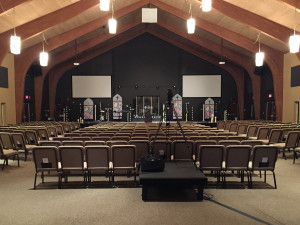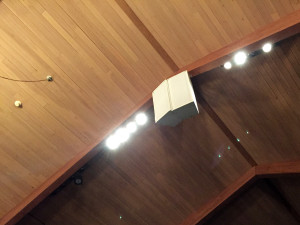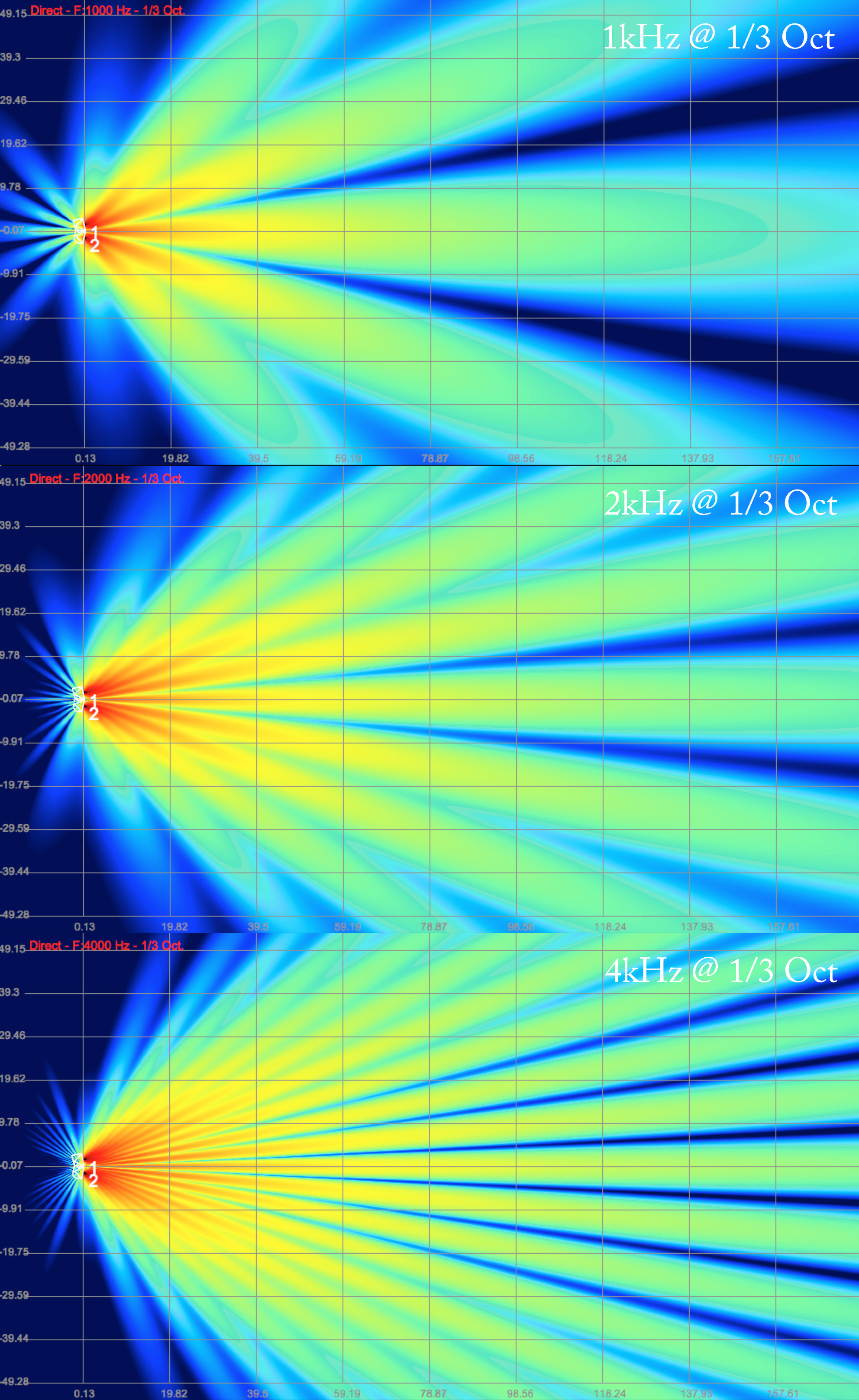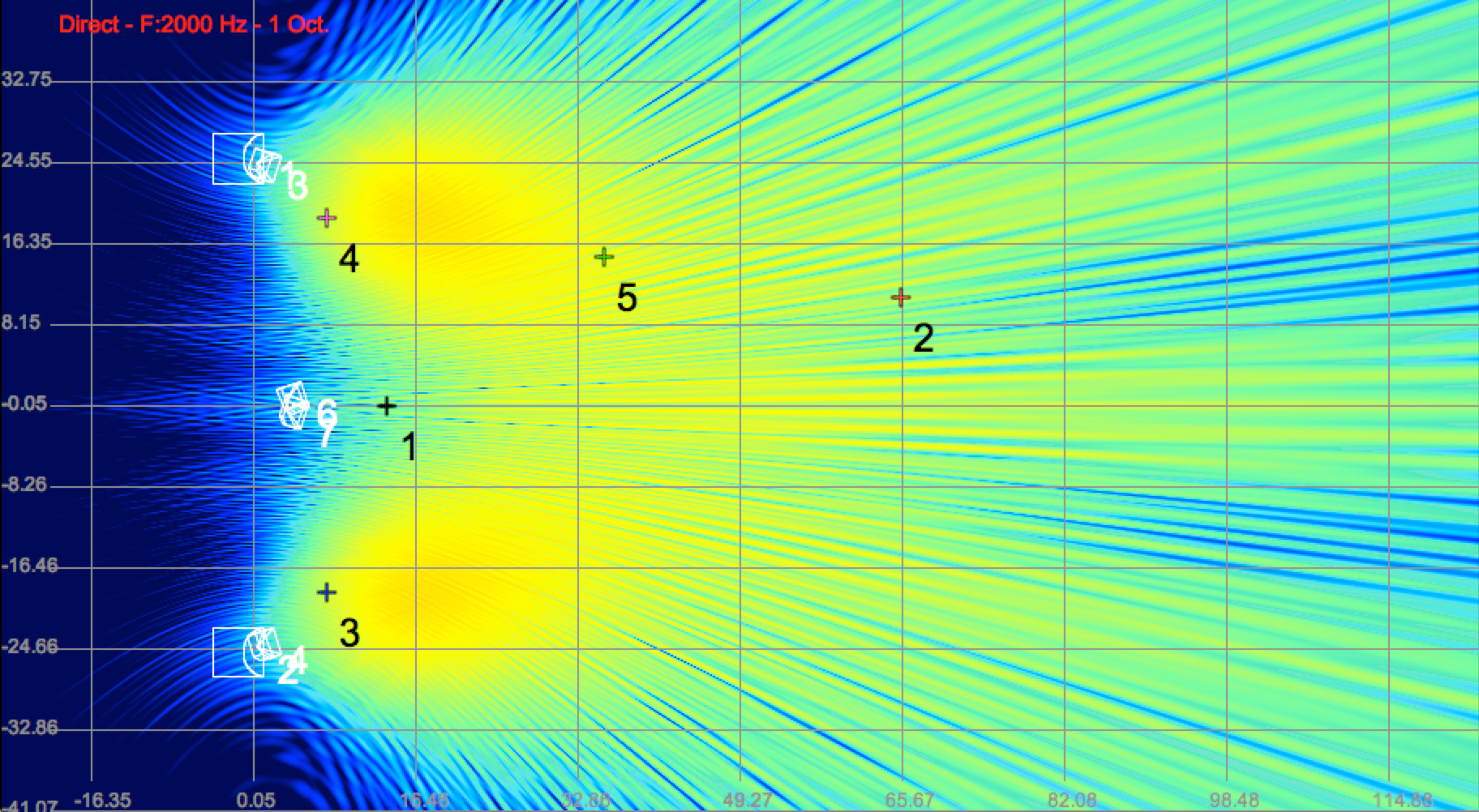I had the pleasure this last week to fly out to Middletown, New York to assist a church with an audio system revamp. Transformation Church has a great team of people working there. Rich, primarily a bassist, has taken over the job of audio, Domingo is the worship pastor and Joe the lead pastor there make up the wonderful team of people that I was able to work with. In the next following posts I will be going through explaining the system problems, how fixed them, and the final result of the overall audio system when I left New York to head back to Phoenix, Arizona.
The church is a classic assembly of God church building that looks like the inside of an arc turned upside down. There is beautiful wood covering the entire ceiling with large wood support beams running from the ground to the center of the roof. Before the system revamp they had two outdated Community CPL46w speakers, two additional Yamaha S115V on the right and left as a side fill. The subwoofers were covered with two Yorkville LS801P active 18-inch powered subwoofers in a spaced non-coupled setup on the left and right side of the room.
The Community speakers were hung in a mono narrow point-source array at the top center of the building. Unfortunately, the coverage from these speakers was not correctly suited for the room. The first downside is that they were hung without enough vertical tilt down to direct the sound toward the congregation. Because of the lack of tilt, there was too much energy going directly toward the back wall which was causing problems. Another downside of how they were hung is that they were put side by side to each other. When placed side by side, the speakers couple and create a “narrow point-source array”. Because the wide coverage pattern of each speaker, the middle of the array has an overlap in coverage. This has the advantage of narrowing the combined pattern due to the summation in the middle which gives more energy in the middle of the array.
Unfortunately, this area has lots of comb filtering because of the interaction between the speakers, this makes a highly variable high-frequency response in the center. We can see that being modeled below. The first image is the high-frequency coverage of a narrow point-source array in 1kHz, 2kHz and 4kHz. In my opinion, this is one of the most important frequency areas in the spectrum for understanding vocals and speech. You can see the variation in amplitude across the entire room.
Next, we take a look at a 2-octave chunk between 2kHz and 8kHz. This is comparing the difference between a single speaker vs. the narrow point-source array. You can see that the coverage of the single speaker yields a cleaner response compared to the two speakers. The only benefit that I can see of adding the second speaker in this model is by gaining volume, which could be compensated by turning up the amplifier. In my experience, most church systems have some sort of gain reduction somewhere in the signal path between the sound board and the speaker (ie amplifier gain not up all the way or gain reduced at the output of the sound board or system processor). Turning that gain reduction back to unity is often the correct action instead of adding speakers.
Moving on, the addition of the Yamaha S115V in the front is understandably needed to help the system have better coverage with the front and sides of the room. However, the time arrival from both the center array and the side fill created interactions throughout the entire room creating a non-uniform frequency response in the room. As you would walk through the room, the reflections off the back wall and ceiling, the interactions between the two Community speakers in the center narrow point-source array and the interactions from the center array and the side fills made listening and understanding music and speech difficult. You can see these interactions happening in the modeling of the entire room below.
All in all, the complaints from the staff and congregation included that the system didn’t sound clear and consistent from week to week. In the next post we will look at the subwoofers and why the coverage wasn’t consistent throughout the room in the low end.
Stay tuned!
Drew
Check out the next update to Transformation Church here!






